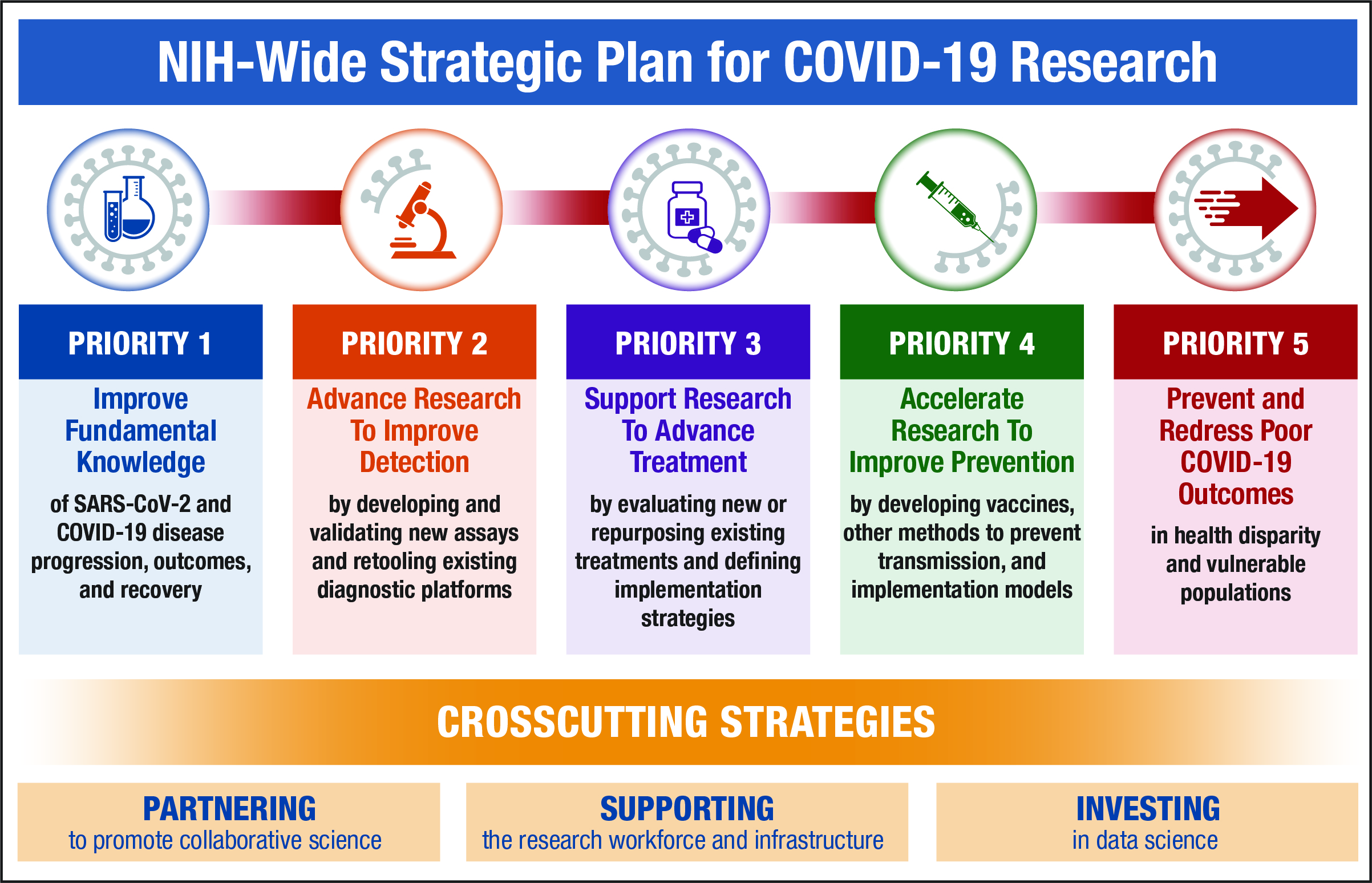Thursday, July 16, 2020
The National Institutes of Health recently released its strategic plan for COVID-19 research.

The plan includes five strategic research priorities and three cross-cutting strategies, including investing in data science.

The plan includes the following information about the agency’s data science strategy:
“To accelerate the pace of scientific discovery, NIH will support multiple data science efforts to ensure that COVID-19 research data are findable, accessible, interoperable, and reusable (the FAIR principles). By enhancing existing and creating new data science resources and analytical tools, NIH will facilitate the use of COVID-19 data to the greatest extent possible, both by those generating the data and by other researchers. These investments will support development of diagnostic tools, survey instruments, risk assessment models, public health surveillance tools, and portals to share data, among others (e.g., NIH Repository of COVID-19 Research Tools, OpenData Portal, PhenX, SHIELD [Systemic Harmonization and Interoperability Enhancement for Laboratory Data Collaborative], and SPHERES [SARS-CoV-2 Sequencing for Public Health Emergency Response, Epidemiology, and Surveillance]). NIH investments to develop shared metrics and terminologies across research projects will facilitate and maximize the use of a wide breadth of data, from chemical structures to clinical trial results.
“Through these approaches, NIH will continue to explore and implement innovative ways to leverage its domestic and global infrastructure to address the needs of the COVID-19 pandemic and speed its resolution.”
Learn more about the research priorities and read the full plan at https://www.nih.gov/research-training/medical-research-initiatives/nih-wide-strategic-plan-covid-19-research.
To see a collection of open-access resources to address COVID-19, please visit this page.


